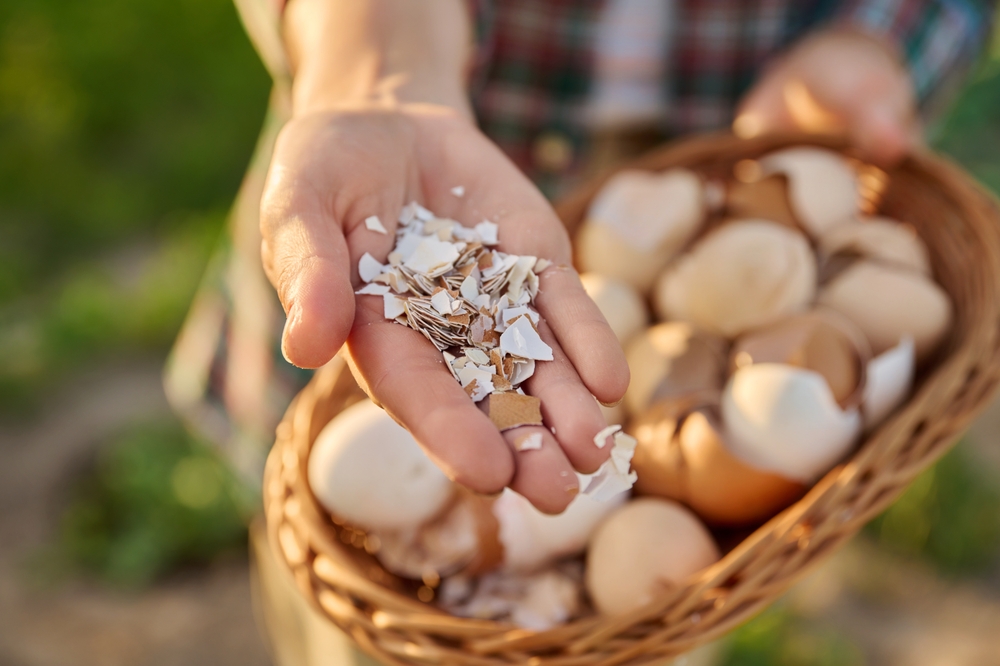In the past, no sooner had I broken eggs I was using, did I throw the shells straight in the trash. In recent months, however, I’ve come to the realisation that’s a pretty silly thing to do.
I’ve learned that eggshells can actually be very useful. By saving them for later use, you might well be helping your garden – and your body.
Did you know that eggshells are made up mostly of calcium carbonate—about 95%—along with small amounts of minerals like magnesium, potassium, zinc, and iron?
These minerals are the same ones that help keep your bones, teeth, and nails strong. The shell has three protective layers: a hard outer layer made of calcium crystals, and two inner membranes filled with keratin proteins that help protect against bacteria.

Have a look through this list below, and remember to share with your friends afterwards so that they, too, can put their eggshells to good use.
They’ll appreciate it!
1. How to eat eggshells?
Start by washing the eggshells thoroughly to remove any egg residue. Boil them in water for about 10 minutes to kill bacteria like Salmonella.
Once boiled, let them dry completely — either air-dry on a clean towel or bake them at a low temperature (around 200°F / 93°C) for 10–15 minutes until crisp.
After drying, use a blender, coffee grinder, or mortar and pestle to crush the shells into a fine powder. The finer the powder, the easier it is for your body to absorb the calcium.
2. Easy ways to eat crushed eggshells
You can add the powdered eggshells to your favorite foods without changing the taste. Try mixing a small pinch (about ½ teaspoon) into smoothies, oatmeal, yogurt, or soups. You can also stir it into baked goods or sprinkle it over salads.
Just remember, a little goes a long way. Too much calcium can be hard on your kidneys, so moderation is key.
3. Nutrients for the soil
If you don’t want to eat your crushed eggshells, there are still plenty of other things you can do with them.
Eggshells are broken down quickly, and can supply many nutrients to the soil. Amongst other things, the shells contain valuable calcium and other minerals. If you have enough eggshells, you can really enrich your soil.
4. Soothe skin irritation
Crush some eggshells with a mortar and pestle, then add a bit of apple cider vinegar and let the mixture sit for a few days. The calcium-rich solution makes a classic home remedy that can help calm and soothe minor skin irritations.
5. Drainage
Digging holes and placing eggshells below your plants can assist in increasing the drainage capacity and air circulation of the soil.
This, in turn, helps plants stay healthy. Just remember that you’re going to have to replace the eggshells as they degrade.
6. Natural cleaner
Crushed eggshells can be used to scrub and clean hard-to-reach areas — they work like an eco-friendly abrasive for cleaning coffee pots, vases, or pans with stuck-on food.
7. Tomatoes
Tomatoes, aubergines and peppers can suffer from calcium deficiency when growing, which causes them to rot. One tip to avoid this is to bury eggshells in the soil. As stated previously, the calcium they contain can be absorbed by the soil and then used by the plants.
8. Keeping snails and worms at bay
A classic garden hack is to scatter broken eggshells around plants, flowers and crops. Apparently the shells are good for keeping snails and worms away, because they don’t like to go over them. All without touching pesticides!
9. Keeping deer away
Alright, not all of you have to worry about deer getting in amongst your plants, but for those that do (the more rural-based readers), deers apparently hate the smell of eggshells.
10. Growing pods
If you’re thinking about planting seeds, eggshells can be perfect as bio-degradable pots. Rinse the shell, place your shells in a carton by the windowsill and fix the soil and shoots. This way, the plants get extra calcium too (as already discussed). When the shoots get too big, simply place the shells in the ground. Of course, it’s a good idea to make a hole in the eggshell for the roots to spread out from.
11. Bird food
Small birds love crushed eggshells because they contain so much calcium. When birds flock to your garden, they offer even more benefits – including their own methods of pest control!
12. pH balance
The pH balance of soil can affect the colour of certain flowers. Take, for example, the hydrangea, which can turn pink or blue depending on the acid/alkali balance in the soil. If your soil is too acidic, using eggshells to balance the pH can be a neat trick.
13. Compost
Eggshells can be a great addition to compost heaps. Remember to crush the shells first to ensure you get the best results!
With these few tips, you can reduce waste and help your garden all at the same time – and it’s so easy to do!
Don’t forget to share these tips with your friends so they can benefit from these hacks involving eggshells.
